| Columns Retired Columns & Blogs |
Audio Research CD-1 CD player Measurements
Sidebar 2: Measurements
The CD-1's maximum output level was 2.08V from the unbalanced jacks, 4.15V from the balanced. Output impedance measured a moderate 330 ohms (balanced) and 165 ohms (unbalanced). DC levels were unmeasurable, and the CD-1 doesn't invert absolute polarity.
Fig.1 is the CD-1's frequency response and de-emphasis error. The 0.8dB rolloff at 20kHz is greater than what we measure in most CD players and digital processors, and may be on the threshold of audibility as a slight reduction in top-octave air. The lower pair of traces in fig.1 shows a positive de-emphasis error of 1dB at 4kHz, and nearly 1.5dB at 10kHz. This will cause pre-emphasized CDs to sound brighter and livelier than normal. De-emphasis errors are usually caused by tolerances in capacitor values in the RC de-emphasis filter.
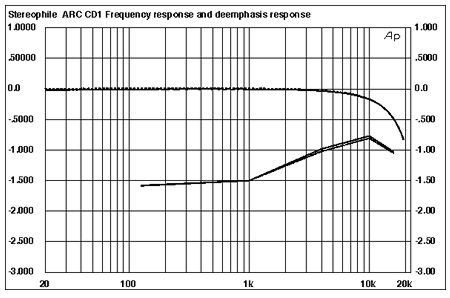
Fig.1 Audio Research CD-1, frequency response (top) and de-emphasis response (bottom) (right channel dashed, 0.5dB/vertical div.).
The CD-1's crosstalk performance (fig.2) was decent but not outstanding. The right–left channel leakage (dotted trace) is higher in level, and is worse than –70dB at 16kHz.
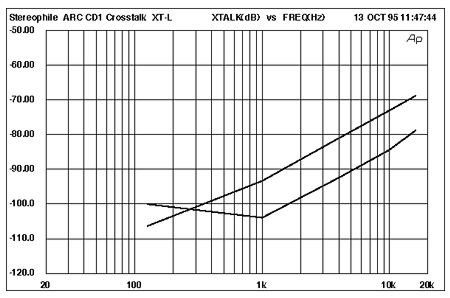
Fig.2 Audio Research CD-1, crosstalk (R–L channel dashed, 10dB/vertical div.).
Moving next to a spectral analysis of the CD-1's output when decoding a 1kHz, –90dB dithered sinewave, we can see a linearity difference between the two channels (the right channel, or dotted, trace peaks higher than does the left-channel trace). More important, however, the overall noise level is quite high, and there's some power-supply noise present at 60Hz and 120Hz. We can also see a trace of second-harmonic distortion as the peaks in the traces at 2kHz. The noise floor's shape is also unusual, with peaks of energy apparent between 6kHz and 8kHz, and again at about 15kHz. Finally, the right channel's noise is about 3dB higher than the left's. This is far from the best performance we've seen with this test.

Fig.3 Audio Research CD-1, spectrum of dithered 1kHz tone at –90.31dBFS, with noise and spuriae (20-bit data, 1/3-octave analysis, right channel dashed).
The same test, but with an extended measurement bandwidth and an input signal of all zeros, is shown in fig.4. Note the huge noise peak above the audioband, a result of the Philips noise-shaping filter used in the CD-1, which moves noise above the audioband. Above about 85kHz the output filter begins attenuating the noise. Fig.4 also shows the unusually shaped noise floor, which is less "white" in character than that measured in most CD players and processors.
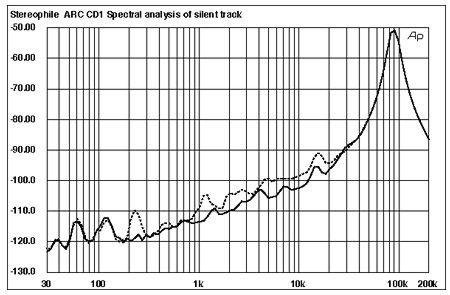
Fig.4 Audio Research CD-1, spectrum of digital silence (20-bit data, 1/3-octave analysis, right channel dashed).
Figs.5 and 6 show the CD-1's left- and right-channel linearities, respectively. Although the left channel has pretty good linearity, the right has a positive error starting at about –85dB. Today's high-quality multibit DACs (particularly the UltraAnalog D20400A and Burr-Brown PCM1702) now exceed the linearity performance of 1-bit DACs and need no MSB trimming.
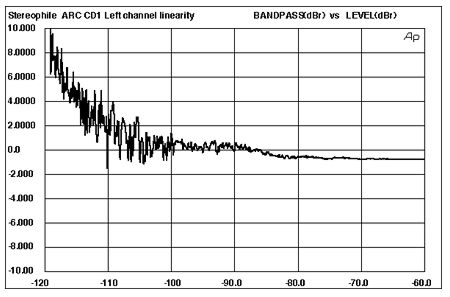
Fig.5 Audio Research CD-1, departure from linearity, left channel (2dB/vertical div.).
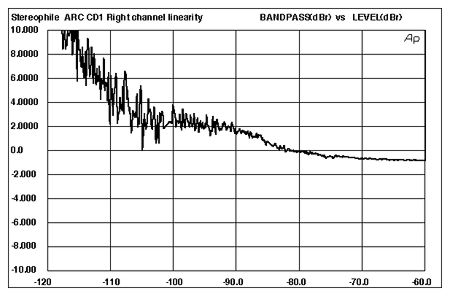
Fig.6 Audio Research CD-1, departure from linearity, right channel (2dB/vertical div.).
The high noise levels seen earlier in the spectral analyses are again apparent in the CD-1's reproduction of a 1kHz, –90dB undithered sinewave (fig.7). The waveform is so overlaid with audioband noise that it's difficult to make out the shape of the sinewave. In addition to being noisy, the waveform's negative-going phases are higher in amplitude than the positive-going phases, indicating differential non-linearity in the DAC. Ironically, 1-bit DACs such as the Philips Bitstream device used in the CD-1 are supposed to have excellent linearity and low-level performance, something we haven't seen in the CD-1.
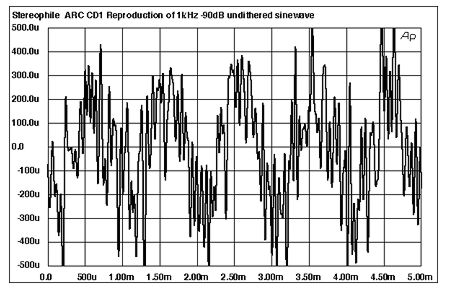
Fig.7 Audio Research CD-1, waveform of undithered 1kHz sinewave at –90.31dBFS (20-bit data).
Fig.8 is the CD-1's output intermodulation spectrum when the unit was reproducing a full-scale mix of 19kHz and 20kHz. The 1kHz difference component is moderately high in level, nearly reaching the –80dB horizontal division. A few more IMD components rise above the –100dB level, but there aren't many of them.
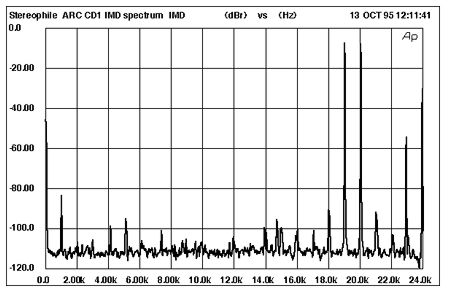
Fig.8 Audio Research CD-1, HF intermodulation spectrum, DC–22kHz, 19+20kHz at 0dBFS (linear frequency scale, 20dB/vertical div.).
I was unable to measure the CD-1's jitter performance; the Meitner LIM Detector wouldn't lock to the clock on the Philips Bitstream DAC. Even if it had locked, the CD-1 won't play discs while standing on its side—a requirement to gain access to the DAC, a surface-mount device located on the underside of the main circuit board.
Overall, the CD-1 had disappointing technical performance. The high noise level was particularly worrisome. This noise is probably inherent in the Philips Bitstream DAC, and not the result of Audio Research's implementation. The company's engineers have a long history of producing many superb-sounding and -measuring products, some of them of true reference quality. The all-tubed LS5 Mk.II preamplifier, for example, has an unweighted S/N ratio of nearly 100dB, with distortion of less than 0.004%. I'm surprised to see Audio Research use the Philips Bitstream DAC in what appears to be an otherwise excellent design.—Robert Harley
- Log in or register to post comments



































